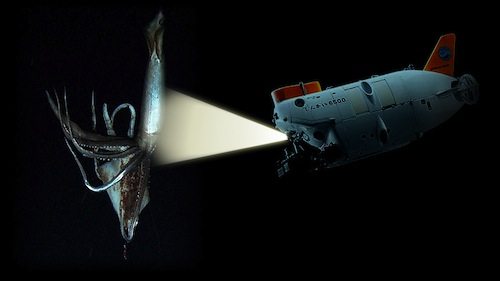Last Updated on 04/07/2013 by Chris Gampat
“Had its feeding tentacles been in tact, it would have been as large as a two story house,” says Edith Widdler.
DIY Photography has an excellent piece right now featuring how a Marine Biologist captured high res imagery of the Giant Squid. Scientist Edith Widder did a TED talk years ago about how the world can study animals by attracting them rather than scaring them away, and she applied her theories to this expedition which proved successful. Particularly, Ms. Widder uses non-motorized cameras, because the sound would perhaps scare the creature away back into the depths. Then there was an LED bait involved which made the creature get accustomed to the light. The light was designed to simulate a bioluminescent light that is similar to a call for help–which attracted it. Eventually, the team shone large lights on it and were able to capture much better images.
For years, scientists have been trying to capture better images of the Giant Squid and it was done years ago as it was feeding on a bait line. The creatures have also been captured in fishing nets and have washed up ashore. But they’ve still never been studied in their natural environments. Even rarer is its larger cousin–the Colossal Squid. National Geographic did a story on a specimen that was captured and frozen, but when they wanted to study the thawed creature it was significantly smaller than it originally was due to the freezing and preservation process.
Wilder’s TED talk on how she did it is next and you can see the squid around the 6:50 mark. And even more can be seen on the Discovery channel.
Please Support The Phoblographer
We love to bring you guys the latest and greatest news and gear related stuff. However, we can’t keep doing that unless we have your continued support. If you would like to purchase any of the items mentioned, please do so by clicking our links first and then purchasing the items as we then get a small portion of the sale to help run the website.


